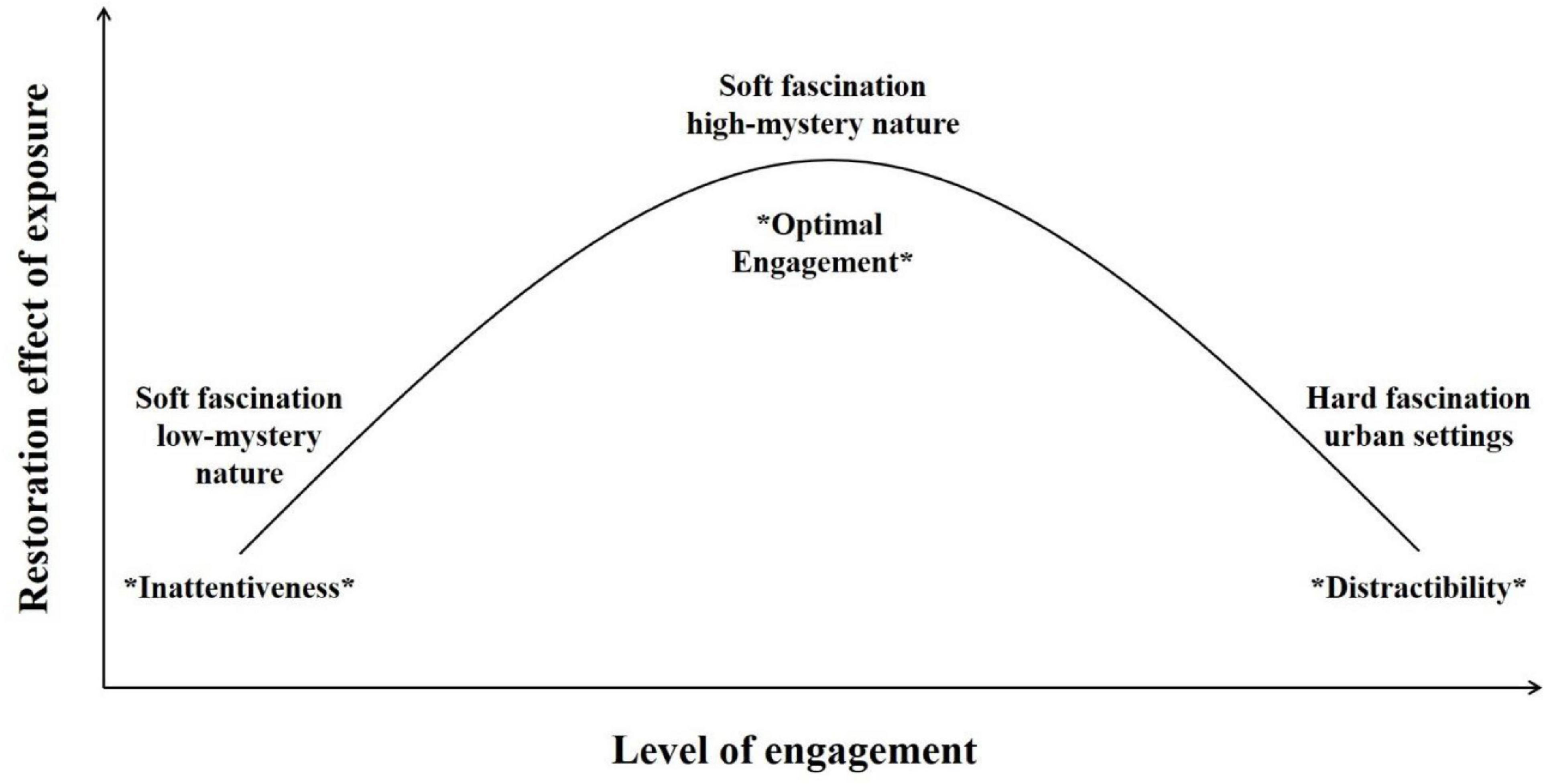Introduction
Modern urban life bombards individuals with an overwhelming array of sensory inputs and demands. From honking traffic and crowded subways to constant notifications on digital devices, the environment can become cognitively exhausting. This phenomenon, known as environmental overload, contributes to mental fatigue, decreased productivity, and reduced emotional well-being.

Environmental Overload
In response to these challenges, the Attention Restoration Theory (ART) proposed by Kaplan and Kaplan (1989) offers a promising framework. ART explains how natural environments help restore depleted attentional resources, improving mental health and cognitive functioning.
Read More- Definition and Scope of Environmetal Psychology
Environmental Overload
Environmental overload occurs when the quantity and complexity of stimuli in one’s environment exceed an individual’s ability to process them effectively. It places strain on the directed attention system, the cognitive function responsible for focusing on tasks while filtering distractions (Evans, 2001). In urban settings, this attentional system is frequently taxed by:
- Traffic noise
- Visual clutter (e.g., billboards, advertisements)
- Constant multitasking demands
- Crowds and confined spaces
Prolonged exposure to such environments leads to mental fatigue, poor decision-making, and emotional exhaustion.
The Attention Restoration Theory (ART)
Kaplan and Kaplan (1989) introduced ART as a psychological model explaining how nature-based experiences can replenish mental resources. According to ART, natural environments have qualities that engage the mind effortlessly, providing a break from the mentally draining demands of urban life.

Attention Restoration Theory
Four Core Components of ART
- Being Away- A sense of separation from routine tasks or environments—psychological or physical—allowing mental disengagement.
- Extent- The environment should feel vast, coherent, and immersive, offering enough stimuli to engage the mind without overwhelming it.
- Fascination- The environment should elicit “soft fascination”—gentle stimuli that effortlessly capture attention, like the rustling of leaves or flowing water.
- Compatibility- The setting must align with an individual’s purposes and inclinations, making interaction with it effortless and enjoyable.

ART
Empirical Evidence for ART
Numerous studies support the restorative effects of nature:
- Berman et al. (2008) found that participants who walked in a park performed significantly better on working memory tasks compared to those who walked in urban streets.
- Exposure to green spaces has been associated with reduced cortisol levels, improved mood, and enhanced creative problem-solving.
- Even short breaks involving natural scenery, such as a window view or a desktop wallpaper, have been found to reduce mental fatigue.
Applications of ART in Real Life
Some applications of ART include-
- Urban Planning and Architecture- Designing cities with accessible green belts, community gardens, and urban parks promotes restorative experiences for residents.
- Educational Environments- Integrating natural elements like indoor plants, outdoor classrooms, and green schoolyards can improve student focus and emotional regulation.
- Workplaces- Biophilic design in offices—using natural light, plants, and open spaces—can counteract stress and improve productivity.
- Mental Health Interventions- Nature therapy, forest bathing (Shinrin-yoku), and outdoor meditation are increasingly used in mental health practices.
Conclusion
In a world where environmental overload is the norm, understanding and applying the principles of Attention Restoration Theory is more relevant than ever. By intentionally integrating natural environments into urban life, education, and mental health care, we can combat attentional fatigue and enhance overall well-being. ART offers not just a theory, but a blueprint for a more balanced and cognitively sustainable future.
References
Berman, M. G., Jonides, J., & Kaplan, S. (2008). The cognitive benefits of interacting with nature. Psychological Science, 19(12), 1207–1212.
Evans, G. W. (2001). Environmental stress and health. Handbook of Health Psychology, 365–385.
Kaplan, R., & Kaplan, S. (1989). The Experience of Nature: A Psychological Perspective. Cambridge University Press.
Subscribe to Careershodh
Get the latest updates and insights.
Join 16,595 other subscribers!
Niwlikar, B. A. (2025, April 24). Environmental Overload and 4 Important Components of Attention Restoration Theory. Careershodh. https://www.careershodh.com/environmental-overload/
